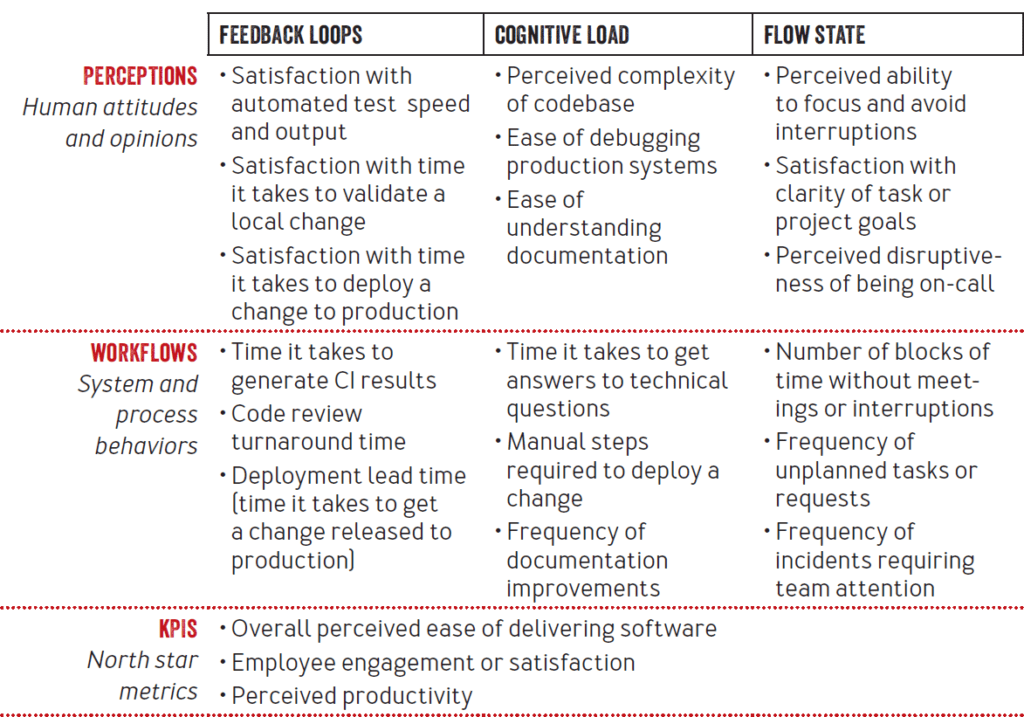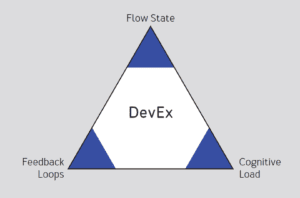In a 2021 paper, Michaela Greiler, Margaret-Anne Storey and Abi Noda defined Developer Experience as “how developers think about, feel about, and value their work“. Subsequently in 2023, along with Nicole Forsgren, they published a follow-up paper titled: “DevEx: What Actually Drives Productivity“. In that paper, they describe three dimensions of DevEx; Feedback Loops and Cognitive Load and Flow State. This post, as part of the series that looks at Strategy Deployment and other approaches, explores how these DevEx dimensions can be applied.
Developer Experience Strategies
Essentially, the three dimensions can be interpreted as strategies themselves:
- Shortening Feedback Loops
- Reducing Cognitive Load
- Increasing Flow State
Using them as guiding policies in this way means that they can inform more tactical investments and initiatives. For example, implementing tooling and automation (e.g. Continuous Delivery) might help shorten feedback loops. Reorganising around value streams and platforms (e.g. Team Topologies) might help reduce cognitive load. Aligning and limiting WIP to strategic portfolios (e.g. Flight Levels) might increase flow state. As an aside, I’m also curious how the current buzz around AI might also help deliver on these strategies by providing faster feedback, being an external augmentation of memory, or reducing interruptions.
Developer Experience Evidence
The paper also discusses measuring DevEx, and suggests both qualitative and quantitative metrics for the three dimensions. See the table below. When I describe the outcomes which would demonstrate Evidence of a successful agile transformation, one of those outcomes is Sustainability. That is being able to continue to deliver successfully over the long term. DevEx can be highly correlated with Sustainability. Developers who have good experiences are likely to be happier, more engaged and work in a way which produces results over an extended period. There are also strong arguments for correlations to many if not all of the other outcomes. As a reminder, they are Productivity, Responsiveness, Predictability, Quality and Value.

Some of these metrics are also associated with DORA and SPACE, which is not surprising given the involvement of Nicole Forsgren in all this research. Those bodies of work provide additional areas to look for DevEx evidence. More traditional Flow metrics (e.g. Cycle Time, Throughput, WIP etc) are also relevant.
Conclusion
Thus, Developer Experience, and specifically these three dimensions, provide a useful lens through which to look at Strategy Deployment for an agile transformation with the X-Matrix. The dimensions can be used as the Strategies themselves and the related measures for the Evidence. The exercise for the organisations and teams is then to correlate those to their Aspirations and decide what Tactics are the right ones to start making improvements.

